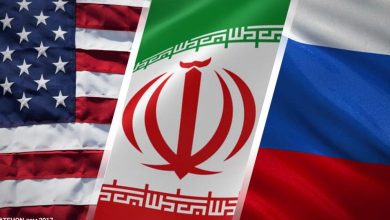
ISIS Violations in North and East Syria Legal Description and Specialized Courts (Part One)
Summary:
The elimination of the terrorist organization ISIS is not limited to its military defeat; there is a need to find a solution to the aftermath of ISIS, which includes its women, children, sleeper cells, and members in detention centers in the northern and eastern regions of Syria.
During the period of ISIS control over areas in Syria, its members committed the most heinous crimes against the peoples of the region. Therefore, it was necessary, first, to examine the legal description of these crimes and, second, to study the possible judicial mechanisms for holding ISIS criminals accountable, shedding light on the obstacles hindering the achievement of criminal justice for the victims of this terrorist organization.
Introduction
The post-military defeat phase of ISIS requires a necessary investigation into how to deal with its aftermath in the northern and eastern regions of Syria. This encompasses its sleeper cells, women, and children in camps and shelters[1], and its former members in detention centers in particular. These elements, numbering in the thousands, have committed the most heinous and atrocious crimes against the Syrian people, especially against ethnic, religious, and racial minorities in the northern and eastern regions of Syria.
The investigation into the legal classification of these crimes and the possible judicial mechanisms for holding ISIS criminals accountable becomes of great importance at a time when the international community, represented by the United Nations Security Council, is reluctant to fulfill its responsibilities in maintaining international peace and security. It should effectively and earnestly work to find solutions for the ISIS aftermath. This has led the Autonomous Administration of North and East Syria to decide to prosecute ISIS criminals before its courts, based on its responsibilities and in accordance with its laws.
The Islamic State in Iraq and Syria (ISIS) is an extremist jihadist group that originally splintered from the terrorist organization al-Qaeda.[2] It expanded its terrorist activities into Syria following the outbreak of popular protests in 2011. As the Syrian armed conflict intensified, the organization emerged under the leadership of Abu Bakr al-Baghdadi, merging with the al-Qaeda-affiliated group Jabhat al-Nusra in Syria, led by Abu Mohammed al-Julani.[3]
The Syrian conflict provided a golden opportunity for the terrorist organization ISIS to emerge and seize control of vast areas of Syria.[4] It attracted numerous individuals, drawn to the ideological beliefs of the organization, from outside Syria and of various nationalities. The total number of individuals who joined its ranks reached around 30,000 from different Arab countries, Western and Eastern Europe, and Asian countries.[5] The majority of these individuals entered Syria through the airports of the Turkish state, and through its shared borders with Syria in particular. This enabled ISIS to militarily outperform other armed factions involved in the Syrian conflict, turning it into an organized military force that controlled extensive regions spanning between Iraq and Syria.
In 2013, following the collapse of its alliance with “Jabhat al-Nusra,” the leader of the organization, Abu Bakr al-Baghdadi, announced the establishment of what he called the “Islamic State in Iraq and Syria” (ISIS). In June 2014, the so-called “Islamic State” declared itself a “caliphate,” and al-Baghdadi proclaimed himself the “Caliph(head) of the Islamic world,” calling on Muslims to pledge allegiance to him and designating the Syrian city of Raqqa as the capital of his alleged “caliphate.”[6]
ISIS aimed to establish a theocratic state based on its own interpretation of Islamic law, specifically seeking to reinstate the Islamic caliphate that ended with the fall of the Ottoman Empire[7]. It created its own infrastructure to enforce its authority in the areas under its control, consisting of the Hisbah (civil police), the security apparatus (intelligence forces), courts, and entities managing recruitment operations. The Hisbah also operated an all-female brigade (Al-Khansaa Brigade), established to ensure compliance with restrictions and impose penalties on women and girls across the territories under the organization’s control.[8]
ISIS resorted to brutal practices, spreading terror and fear among local communities, and the term “ISIS” became synonymous with excessive violence against civilians and captured fighters[9]. Numerous international reports have confirmed that this organization committed a series of crimes, clear violations of international humanitarian law, and serious breaches of international human rights law. As a result, ISIS has been classified as a terrorist organization and included in the list of terrorist organizations by both the United Nations and the European Union. The United Nations Security Council, in its resolution numbered 2379 issued on September 21, 2017, affirmed that this organization is a terrorist group, posing a global threat and a threat to international peace and security due to its terrorist activities.
The liberation of the city of Kobani and the defeat of the Islamic State in 2015, achieved through local and self-driven efforts, notably by the resistance of the People’s Protection Units (YPG) and the Women’s Protection Units (YPJ), marked the beginning of the end for the “Islamic State in Iraq and Syria.” Subsequently, in 2017, the Syrian Democratic Forces, supported by the international coalition against ISIS, besieged the Syrian city of Raqqa, the “capital” of the Islamic State, and liberated it from ISIS terrorism. This led to a rapid decline of ISIS and its geographic control, culminating in the fall of its last stronghold in Baghouz in March 2019.
However, despite the defeat of ISIS in northern and eastern Syria and the elimination of its alleged caliphate, this organization has left behind numerous complex and sensitive issues. These issues include concerns related to its women and children in camps and shelters, as well as the former members in detention centers, raising various legal challenges, not to mention the sleeper cells that continue to pose a security threat to the people of northern and eastern Syria.[10]





